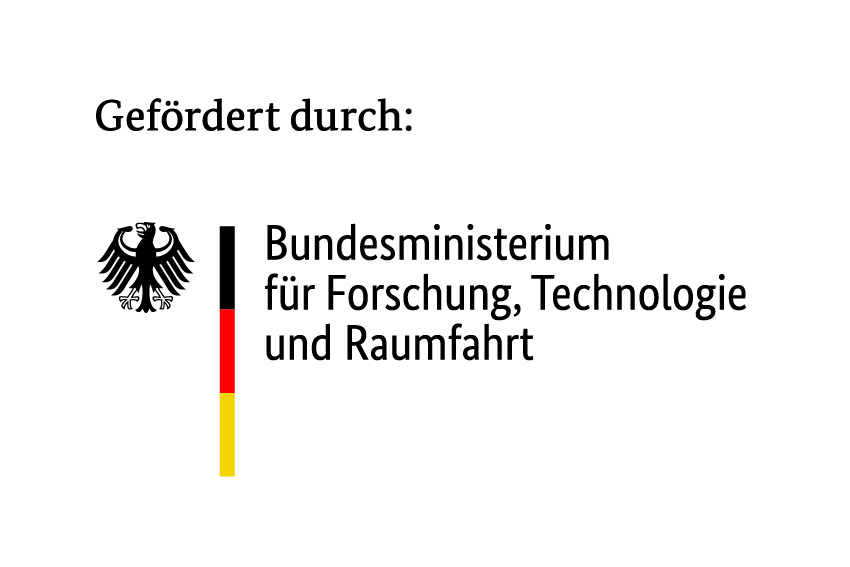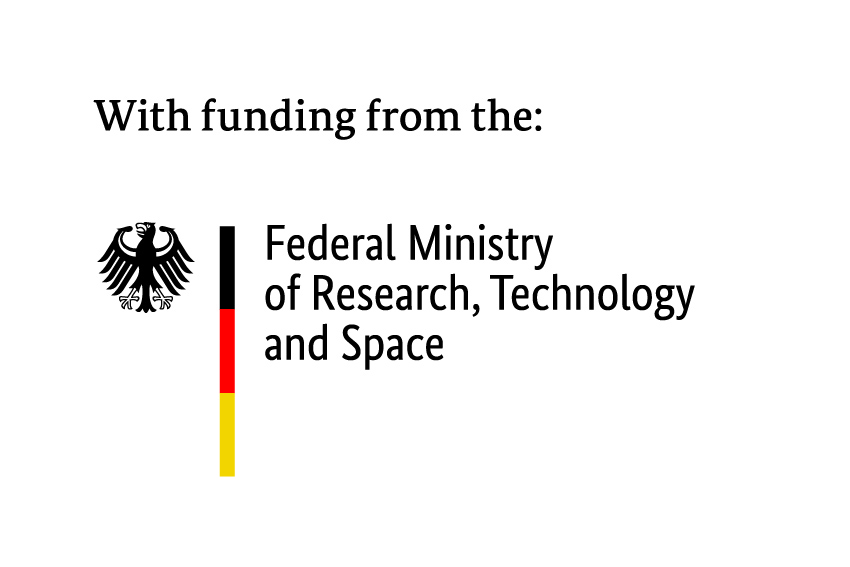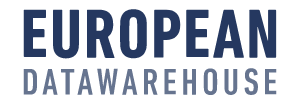Green Auto Securitization
GAS
The collaborative project “Green Auto Securitization” (GAS) aims to provide insights for the design of future green auto policies and their impact on the risk management of European financial institutions. The project is based on an empirical analysis of securitized auto loans and leases (Auto ABS) regarding sustainability-related data, fundamental values of vehicles and credit risks. The project consists of two subprojects.
Subproject 1: Analysis and definition of transparent sustainability factors and standardized methods for the definition of green financial products in the automotive industry.
The first subproject analyzes and defines transparent sustainability factors and standardized methods for the definition of green financial products in the automotive sector. In particular, the role of financial markets and environmental regulation will be investigated and a framework for two new green financial products will be developed.

Prof. Dr. Loriana Pelizzon
- pelizzon@safe-frankfurt.de
- Leibniz-Institut für Finanzmarktforschung SAFE
- Frankfurt am Main
Subproject 2: Building a model database of four blocks
The second sub-project is building a model database with vehicle and manufacturer level information. This consists of four blocks: (i) the sustainability characteristics of vehicle manufacturers, (ii) the characteristics of car models, (iii) the information on car loans, and (iv) the characteristics of securitization product.

GAS I How to Green the European Auto ABS Market - A Literature Survey
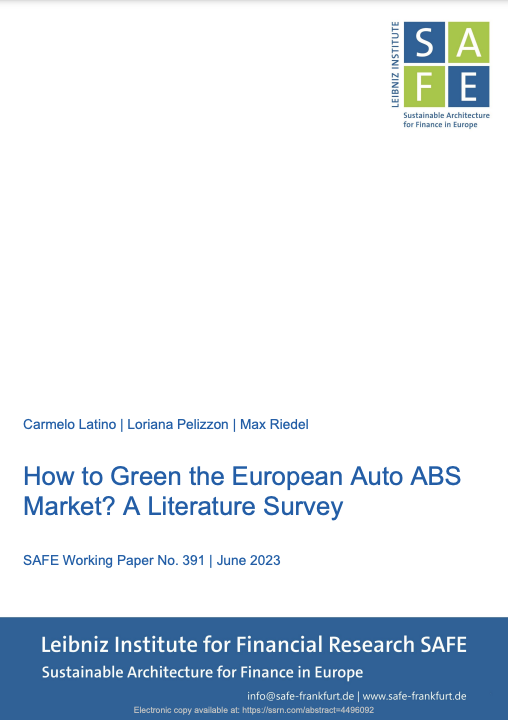
How to Green the European Auto ABS Market? A Literature Survey
This literature survey explores the potential avenues for the design of a green auto asset-backed security by focusing on the European auto securitization market. In this context, we examine the entire value chain of the securitization process to understand the incentives and interests involved at various stages of the transaction. We review recent regulatory developments, feasibility concerns, and potential designs of a sustainable securitization framework. Our study suggests that a Green Auto ABS should be based on both a green use of proceeds and a green collateral-based methodology.
- Veröffentlichungsdatum: 06.07.2023
- Autor:innen: Carmelo Latino, Loriana Pelizzon & Max Riedel
- Publikationsart: Working Paper
- Link zum Zeitschriften-Artikel
GAS I Fragmented EU Car Labels: How To Achieve Consumer-Friendly Standardisation and Transparency?

Fragmented EU Car Labels: How To Achieve Consumer-Friendly Standardisation and Transparency?
We examine the EU car labelling regime for CO2 emissions and fuel efficiency under Directive 1999/94/EC and document strongly diverging national labelling methodologies. Findings from behavioural economics show that labels help consumers make informed decisions if they are well-designed, comprehensible, and informative about hidden costs. However, when comparing the national car labelling methodologies, we find stark inconsistencies, which undermines the EU’s effort to decarbonise the car sector. Using new vehicle registration data across the EU, we document heterogeneous distributions of the car labels if the national labelling methodologies were applied to the cars registered in the individual countries and in the entire EU. To solve these discrepancies, we assess the EU energy efficiency labelling regime for electric appliances under Regulation (EU) 2017/1369 as a labelling role model and discuss proposals for standardising the EU car labels. We conclude that the future car label would preferably include two distinct coloured scales with absolute labelling thresholds for both CO2 emissions and fuel efficiency.
- Veröffentlichungsdatum: Oktober 2024
- Autor:innen: Nikolai Badenhoop & Max Riedel
- Publikationsart: Working Paper
- Link zum PDF-Dokument
GAS I Mutual Funds’ Appetite for Sustainability in European Auto ABS

Mutual Funds’ Appetite for Sustainability in European Auto ABS
Using hand-collected data on European auto asset-backed securities (Auto ABS), we examine the role of mutual funds in financing the transition to zero-emission mobility. Mutual funds, particularly those with a green mandate, tend to have a higher exposure to sustainability-transparent Auto ABS and tend to allocate more capital to deals with a higher proportion of electric vehicles. However, we find no clear preference for portfolios with lower average CO2 emissions. This behaviour suggests that, in the absence of a globally recognized framework for green securitizations, asset managers rely on sustainability proxies that are associated with the lowest disclosure processing costs. Our analysis provides important new evidence on how standardized sustainability disclosures at both the prospectus and loan levels could influence asset allocation.
- Veröffentlichungsdatum: 25. April 2025
- Autor:innen: Carmelo Latino, Loriana Pelizzon, Max Riedel und Yue Wang
- Publikationsart: Working Paper
- Link zum PDF-Dokument
GAS I Vehicle identifiers: the key to jumpstarting the European Green Auto ABS market?
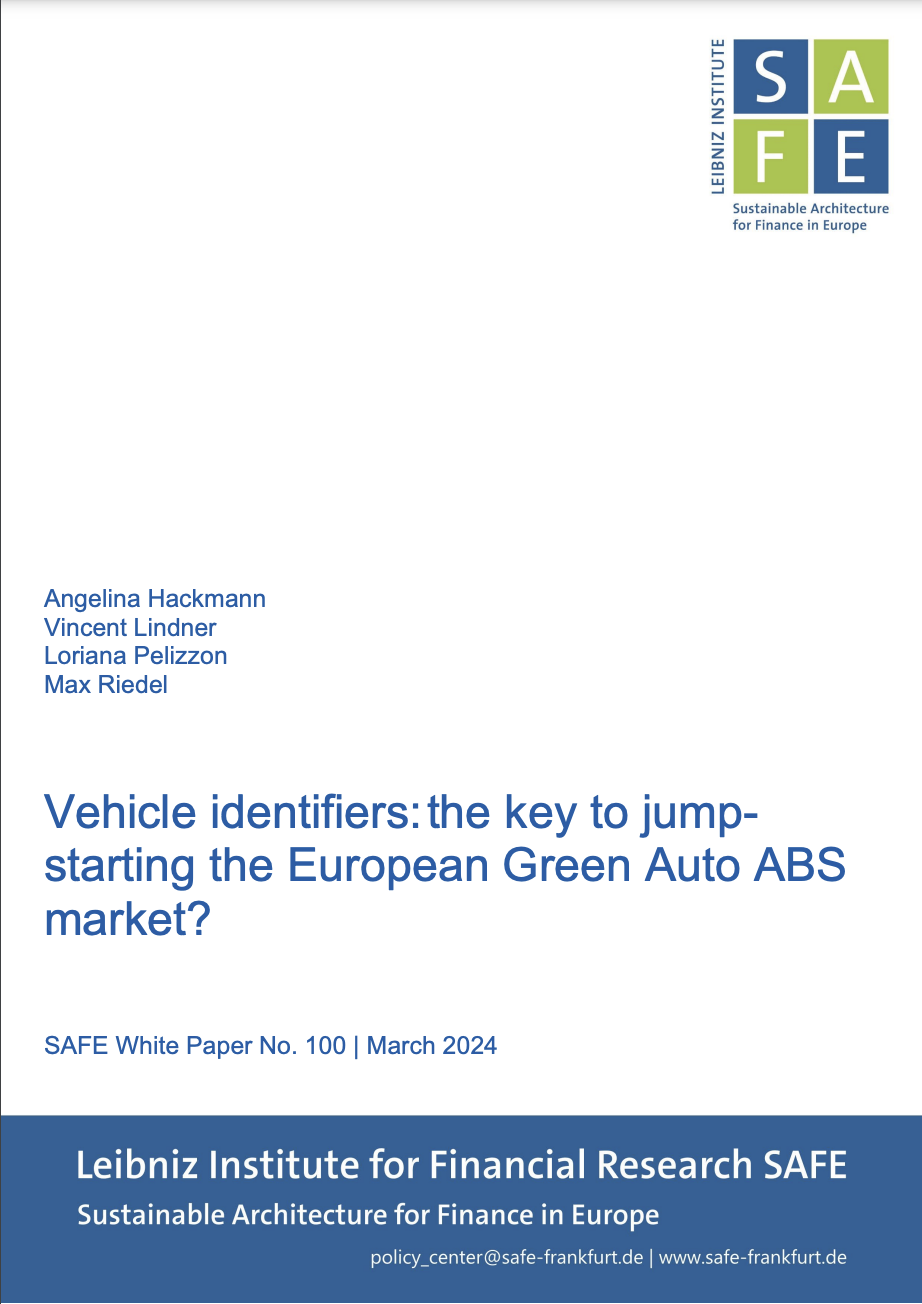
Vehicle identifiers: the key to jumpstarting the European Green Auto ABS market?
This paper addresses the need for transparent sustainability disclosure in the European Auto Asset-Backed Securities (ABS) market, a crucial element in achieving the EU's climate goals. It proposes the use of existing vehicle identifiers, the Type Approval Number (TAN) and the Type-Variant-Version Code (TVV), to integrate loan-level data with sustainability-related vehicle information from ancillary sources. While acknowledging certain challenges, the combined use of TAN and TVV is the optimal solution to allow all stakeholders to comprehensively assess the environmental characteristics of securitised exposure pools in terms of data protection, matching accuracy, and cost-effectiveness.
- Veröffentlichungsdatum: März 2024
- Autor:innen: Angelina Hackmann, Vincent Lindner, Loriana Pelizzon & Max Riedel
- Publikationsart: White Paper
- Link zum PDF-Dokument
